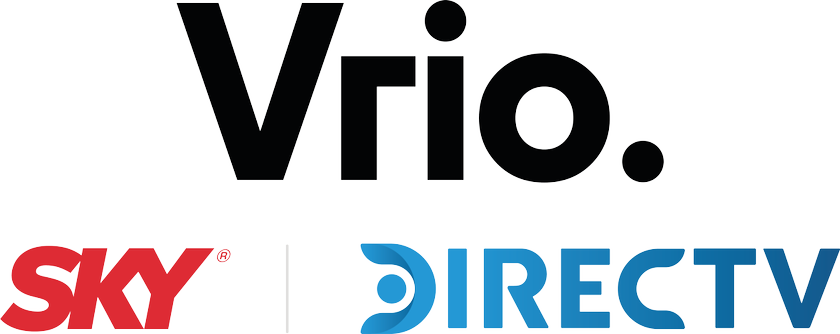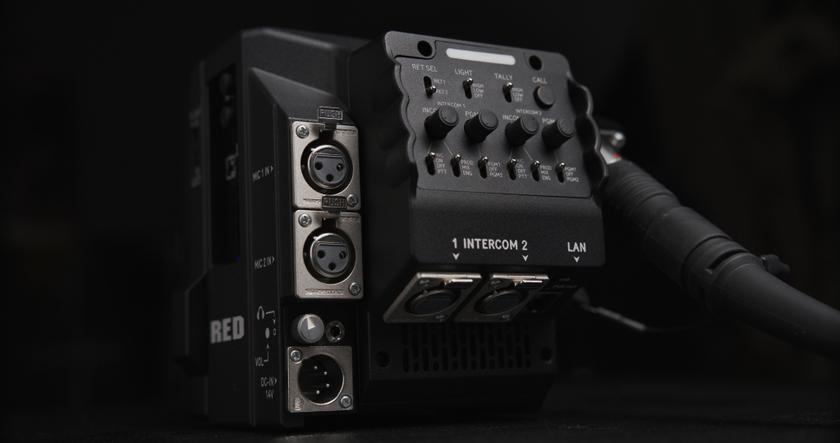Olympics Broadcasters Stress Multiscreen Experience
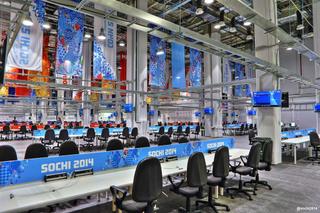
The 62,000-square-meter International Broadcasting Center is situated in the the Olympics’ Main Media Centre
SOCHI, RUSSIA—On July 4, 2007, while fireworks were going off for Independence Day in the United States, the rockets’ red glare was being replicated over in the Russian Federation as the coastal resort city of Sochi learned that it was to host the 2014 Winter Olympics. Since then, stereo 3D has come and largely gone, the companion screen has risen hugely in importance, IPTV has taken a prime role in the distribution of such major events — broadcasting every event live is now commonplace — and 4K has threatened to gatecrash the party.
Staging the Olympics is all about hitting a moving target far in the future — famously, when London 2012 won its bid, Twitter hadn’t even been launched — so even a seven year lead time is less generous than it seems. And there was legacy to consider too, as following the emergent model there were plenty of sporting events coming soon after to consider, the new Russian GP and 2018 FIFA World Cup matches among them.
For the Winter Olympics, eleven venues are grouped together in two clusters: the Coastal Cluster by the Black Sea and the Mountain Cluster in the Krasnaya Polyana Mountains, roughly 30 miles away. The 62,000-square-meter IBC is situated in the Main Media Center in the Coastal Cluster, while a special 8,900-square-meter Mountain Broadcast Center gives on site broadcasters a base up in the Gorki Media Center in Krasnaya Polyana and includes four studios and six live positions on the roof with allegedly #8220;stunning#8221; views. The two centers are linked by train (34 minutes apart) and fiber (substantially quicker).
PANORAMA
One of the most important post-bid moves inside the Russian Federation was the creation of Panorama (aka ANO Sports Broadcasting) by a group of Russian broadcasters, which equally swiftly in turn ordered a dozen HD OB units from Sony. These break down into three 24-cam units, four 16-cam units and five 10-cam units, which will be joined by seven DSNG vehicles, a mobile master control room and a media office. The bulk of Sochi’s broadcast facilities are coming from this impressive fleet, which will be largely crewed by 1,200 graduates of a three year, 30-event multi-stage training program established specially for the Games by Panorama. And, since you asked, a dedicated Russian/English broadcasting terminology app has also been produced to ease the problems of dovetailing local and international crews together. To date, it boasts 16,000 word combinations.
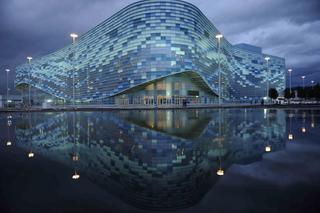
The Iceberg Skating Palace, a 12,000-seat multipurpose arena, will host the figure skating and short track speed skating events. The Panorama trucks are based around a Snell Kahuna vision mixer and host a mix of Sony HDC-1500R and HDC-3300R camera, the latter being able to operate on either hybrid fibre or triaxial cable. The flagship 24 camera trucks will also be equipped with the latest HDC-2500 3G cameras and VTRs, as well as OLED monitors. The Slow Motion replay areas use EVS XT3 servers in conjunction with XDCAM PDW-F1600 recorders, while the audio areas are dominated by a Studer VISTA 9 digital audio mixer incorporating a 42-fader console with a number of remote optical stage boxes. All communications are being provided via Riedel Artist Matrices, and the tender vehicles for the 24-cam trucks are equipped with additional production and audio rooms for additional operational space.
Media-Office is Panorama’s main production platform and allows for the ingest, editing, logging, storing, searching, and delivery of digital content to multiple users in realtime. Feeds coming from any source are captured and stored in a single archive. Utilizing EVS’s IPDirector, the Office enables fast search and retrieval of relevant video content from anywhere in the world, allowing up to 100 users to simultaneously search for and work with video. It also relies on the Octopus6 Newsroom System, available to as many as 39 users at a time, to piece together videos, images and text into a rundown.
A special kit to be deployed at the Games includes a #8220;spider cam#8221; system called Robycam, developed by Movicom in Moscow, a cable cam system from the same company, numerous cranes sand remote heads, a whole raft of ultra slo-mo kit, five offroad Segway camera platforms and more. More conventionally, OBS is planning to utilize 450 cameras to produce more than 1,600 hours of live coverage
An Olympic News Channel will broadcast 456 hours of coverage, which is one of the key components in many broadcasters’ online strategies. London 2012 was literally a gamechanger when it came to online, with the likes of the BBC planning on carrying six live HD streams from Sochi. This is, of course a step down from the 22 streams carried during London 2012, and indeed it looks like not all six will be available via broadcast platforms, but it is a significant increase over Vancouver 2010.
360-DEGREE COVERAGE
It will also mark the debut of the corporation’s new cross-device digital platform, which has been designed to give an integrated viewing experience across all four screens. Not just aimed at sports — the BBC also plans to provide this same sort of full, 360-degree coverage for big cultural events such as the Glastonbury Festival — the new platform dials down the emphasis on video to make a more inclusive use of curated text commentary and data. In common with the efforts of other broadcasters, the service will also be connected to Facebook, Twitter and Instagram (though not perhaps to the extent of NBC which is premiering feature content on Facebook).
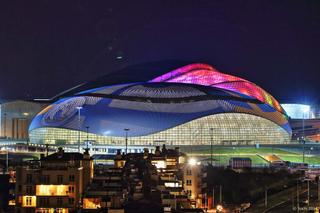
Many of the ice hockey games will be played at the Bolshoy Ice Dome. Also in common with other broadcasters, fewer people will be on the ground than before, with gallery, post and indeed a majority of the team based back at its MediaCity base in Salford. All in all the BBC expects roughly 100 people will make the journey to Russia, in an effort greatly scaled back from the past. Onsite personnel include talent, obviously, and a technical staff that can maintain the relatively small operations in the IBC and MBC which are running eight edit stations between them. Avid will be used onsite, coupled with a DVS Venice system, with FCP running back in Salford where a 200-strong team will be packaging content and more.
One thing that won’t be running through those pipes is any 4K material. At least some of the blue ribbon events will be captured in the format, but details about what will be happening — even under the usual obfuscation of taking place at ‘a large winter sporting event’ — are frustratingly sparse. It is less a case of gatecrashing the party, and more like sneaking in through the back door without a proper invite. However, Olympic sponsor Panasonic recently announced that its kit will be used to record the Opening Ceremony in 4K, presumably using developmental models of its 4K VariCam and Ultra P2 cards.
Comcast will be recording some of this for integration into its new app for Samsung Ultra HD TVs too, and there are promises of special cinema screenings in the format too, but on the whole the feeling is that this is not 4K’s event. That might possibly be Rio in six month’s time, but that — along with the most fraught build up to a major sporting event since Athens 2000 — is another story.
Get the TV Tech Newsletter
The professional video industry's #1 source for news, trends and product and tech information. Sign up below.
